I've Had Keratosis Pilaris My *Entire* Life—This Is How I Treat It
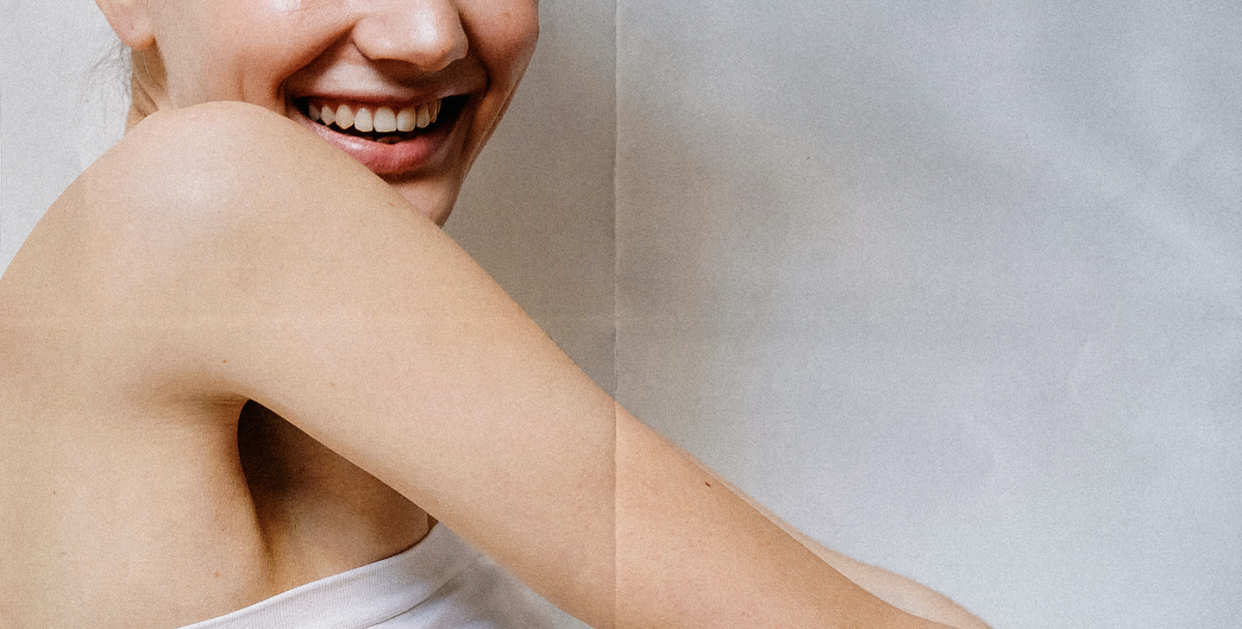
"Hearst Magazines and Yahoo may earn commission or revenue on some items through these links."
Listen, if you’re upset about your keratosis pilaris right now, trust me—I freakin’ feel you. I am quite literally The Queen of bumpy skin textures. Since birth, I've had keratosis pilaris (KP) on my cheeks, my forehead, the backs of my arms, my thighs, and my butt, and I've tested a lifetime of keratosis pilaris creams and treatments. As a refresher, keratosis pilaris is the clinical name for the rough red bumps—or brown bumps, in darker skin tones—commonly found on the backs of your arms...or virtually everywhere, if you're me. 40 percent of adults have keratosis pilaris to some degree, and there's unfortunately no permanent cure or fix—there's only management (I know, I'm truly sorry).
Over the years, I've tested every DIY recipe, every wacko internet “cure,” and every prescription and drugstore product. I’ve read every Reddit thread, decoded every medical study, and pestered every dermatologist I’ve ever met for answers. And while my KP isn't gone (and never will be), it is dramatically reduced—probably 50 percent better than it ever was, thanks to a gentle, consistent routine.
But before you go buying every product listed below, you really need to first understand what's causing the bumps, or you'll never be able to correctly treat them without making them even worse. So take a sneak peek at my favorite keratosis pilaris creams and treatments, below, then (please!) keep reading for advice—from dermatologists Mary Thomas, MD, and Mona Gohara, MD—on creating the best KP routine for your skin.
Our top keratosis pilaris creams and products of 2022
How I treat my own keratosis pilaris
FIRST, LISTEN: Even though this article includes 10 of my favorite keratosis pilaris products, I don't actually use all 10 products at once—and neither should you. Irritation makes KP worse, and for me, I've found my KP looks best with 90 percent moisture, 10 percent exfoliation. So how do you figure out which of these 10 products is best for you? It'll be a game trial-and-error, because every skin type is different. Still, here's my own personal treatment plan (with additional product options I've loved and used):
For the keratosis pilaris on my face:
A sulfate-free face wash morning and night
A gentle lactic acid serum every other night
A fragrance-free moisturizer morning and night
A second thicker moisturizer (on top of the KP only) at night
For the keratosis pilaris on my body:
A thick, rich, moisturizing body cream every single night
A lactic acid-based lotion on my KP every other night
An acid-based body scrub once a week in the shower (ONCE! Seriously! Trust me!)
The best products for keratosis pilaris
Remember: Dousing your keratosis pilaris in acid and trying to scrub it off will make your KP come back harder and angrier. Instead, stick with a simplified routine and do it every single day (!) for six weeks. Seeing no changes after six weeks? Try switching just one of your products (i.e., swap your scrub for a sulfur soap, or your lactic-acid body lotion for a body retinol) and keep at it. Your brain will tell you to go harder, stronger, faster, and to ignore all of this advice—but don't. Patience is your BFF when it comes to KP.
Got all that? Good. Now, please keep reading for what you really want: my favorite products to help get rid of keratosis pilaris, all in once place, and scroll aaalll the way down to find answers to all of your KP questions.
KP Bump Boss Smoothing Body Lotion
This is the latest bb I’ve added to my KP arsenal, and I’ve been genuinely impressed with how it’s helped smooth my arm bumps and even take the edge off my redness. It’s not only filled with 10 percent AHAs (6 percent lactic acid and 4 percent glycolic acid), but it also uses 5 percent urea—which, if you’re unaware, is one of the best freakin’ ingredients for keratosis pilaris. Why? Because urea is technically a humectant, meaning it draws water into your skin to keep it hydrated, but it also has mild exfoliating properties. So you’re getting an extra dose of bump-smoothing magic without the drying side effects.
The lotion also uses centella asiatica (aka cica, an anti-inflammatory herb) to soothe, along with shea butter and squalene to moisturize, and I legit think this combo is one of the main reasons why my skin tolerates the high-strength acids so well without getting itchy. Tbh, when I’m feeling lazy, this is the only product I’ll use some weeks for my KP.
Key ingredients: Lactic acid, glycolic acid, urea (exfoliate while hydrating); cica (soothes); shea butter (moisturizes)
How often to use: Once a day (or twice a day, if your skin can handle it and you're not using any other scrubs, retinoids, or acids)
THE REVIEWS: "This is amazing!" one tester writes. "Definite results within hours after using. While it doesn't get rid of my KP, my skin feels so much smoother with less redness, dryness, and inflammation of the bumps. I actually just came on here to order 2 more bottles."
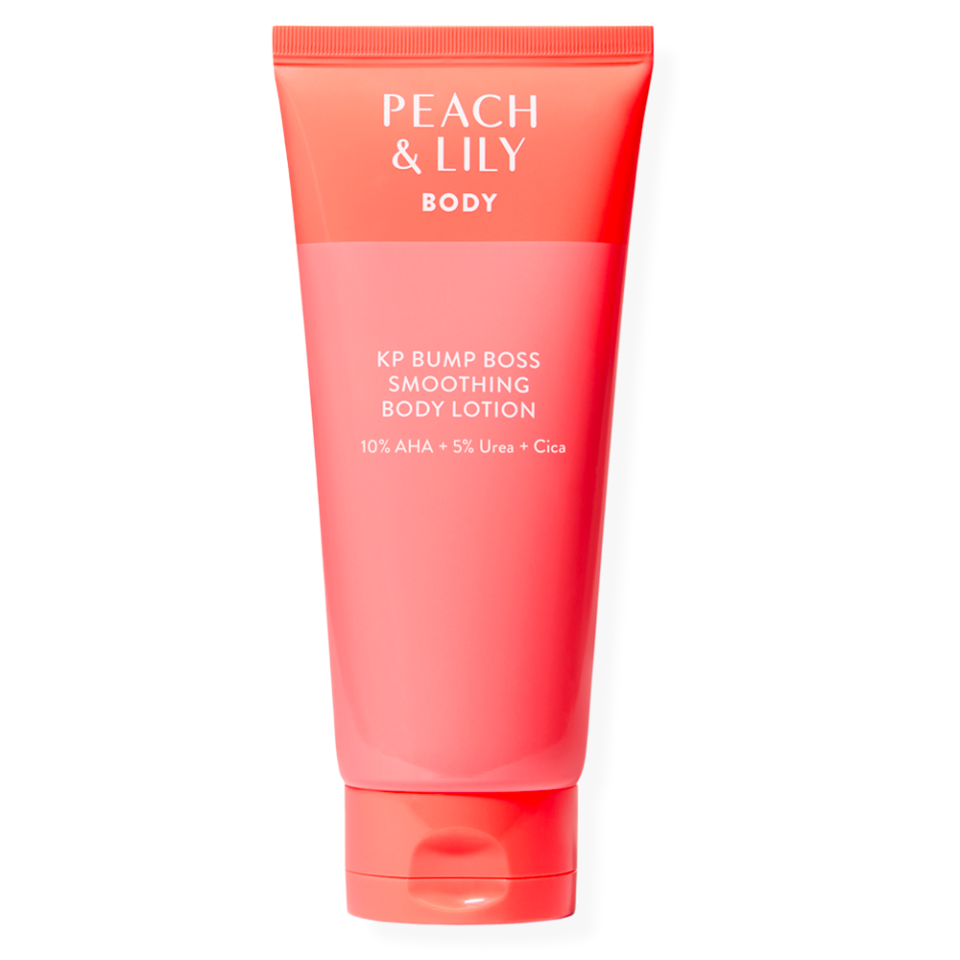
KP Bump Boss Smoothing Body Lotion
$32.00
ulta.com
KP Bump Eraser Body Scrub
Please, please don't try scrubbing the hell out of your KP—it won't work. “Exfoliating with harsh scrubs or loofahs can actually create more inflammation and dryness, making your keratosis pilaris way worse,” says Dr. Gohara. Instead, once a week, gently massage a body scrub filled with skin-smoothing AHAs (alpha hydroxy acids) over your wet skin—body only—in the shower, letting it sit for 60 seconds before rinsing off. I swear by this glycolic- and lactic acid-spiked formula for my bumpy arms and thighs—so much so that we gave it a Cosmo beauty award on 2020 for being that good.
Key ingredients: Lactic acid, glycolic acid (chemical exfoliators); pumice (physical exfoliator)
How often to use: Once a week (and don't use any other scrubs)
THE REVIEWS: "Amazing product! I've suffered with KP on my arms for 15 years and nothing helped. This product didn't just help, it completely cleared it away!," writes one reviewer, adding that one month of use, their arms were smoother. "I'm so excited! This product has changed my life!"
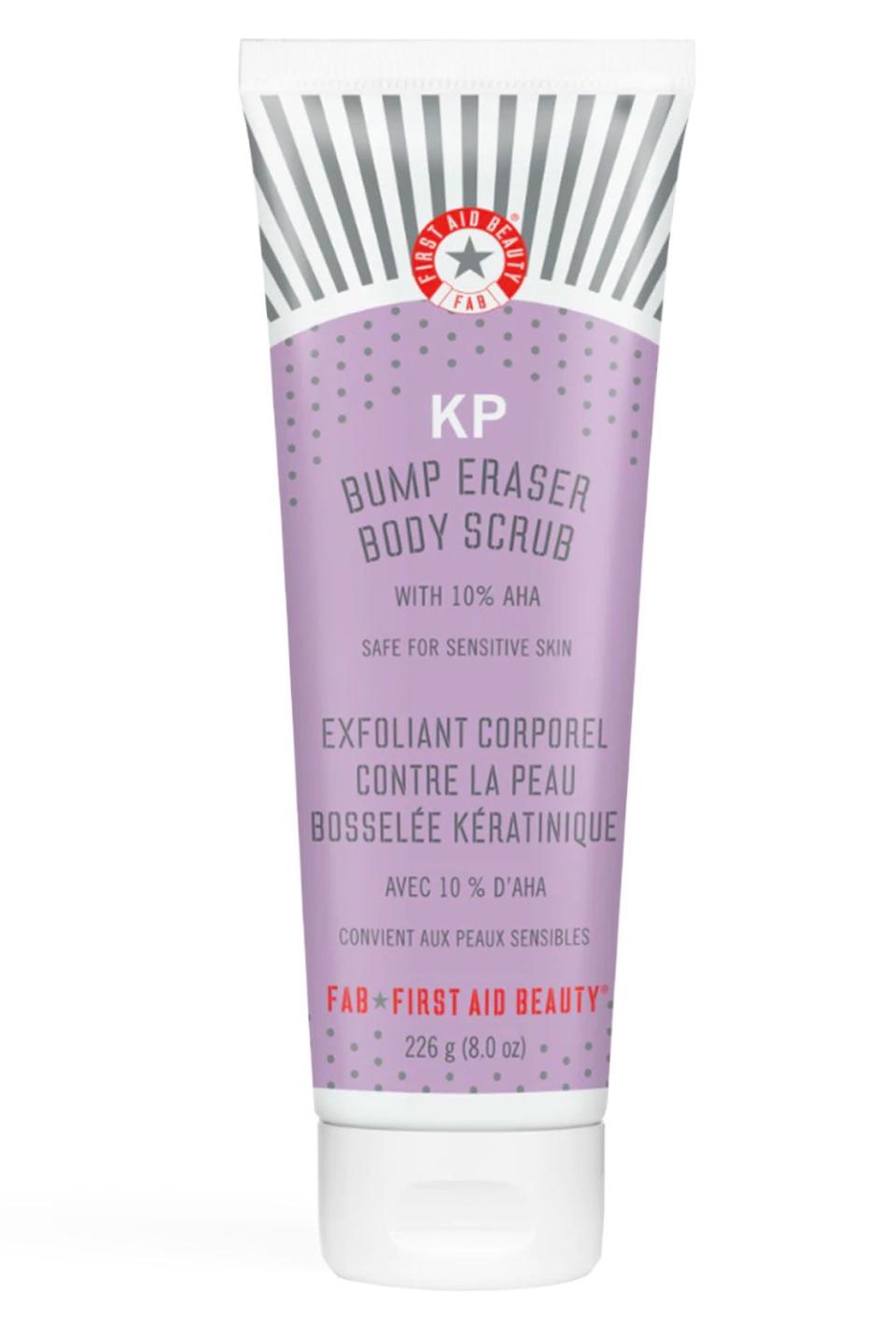
KP Bump Eraser Body Scrub
$30.00
amazon.com
Azelaic Topical Acid 10%
If you feel like you’ve tried virtually everything (but, like, have you? Have you really tried all of my tried-and-true staples on this list?!) and nothing is working for your keratosis pilaris or redness/discoloration, then I highly recommend testing out azelaic acid. Azelaic acid has antibacterial, antioxidant, and anti-inflammatory properties that can accelerate skin turnover, says dermatologist Karan Lal, MD.
"So for KP, it’s going to help reduce inflammation and hyperpigmentation from scratching or picking at your skin, while also helping a bit with redness and texture," says Dr. Lal. We both (Dr. Lal and I are buds, no biggie) like this 10 percent azelaic acid from Naturium, which you can pat over your dry skin once a day before massaging on your regular body moisturizer. Note: You can try to use this one on your facial KP as well, but just know that the formula was too strong for my hypersensitive face!
Key ingredients: Azelaic acid (smooths and calms); niacinamide (brightens and soothes); vitamin C (brightens and protects)
How often to use: Every day or every other day underneath moisturizer (and not at the same time as acids or retinoids)
THE REVIEWS: "My first use of this product minimized my redness in my face and chest by 80% instantly," one tester writes. "This product feels incredible, my skin wasn't irritated at all, and works like a miracle. If you're hesitant and experiencing redness as I have, I highly recommend giving this a shot."
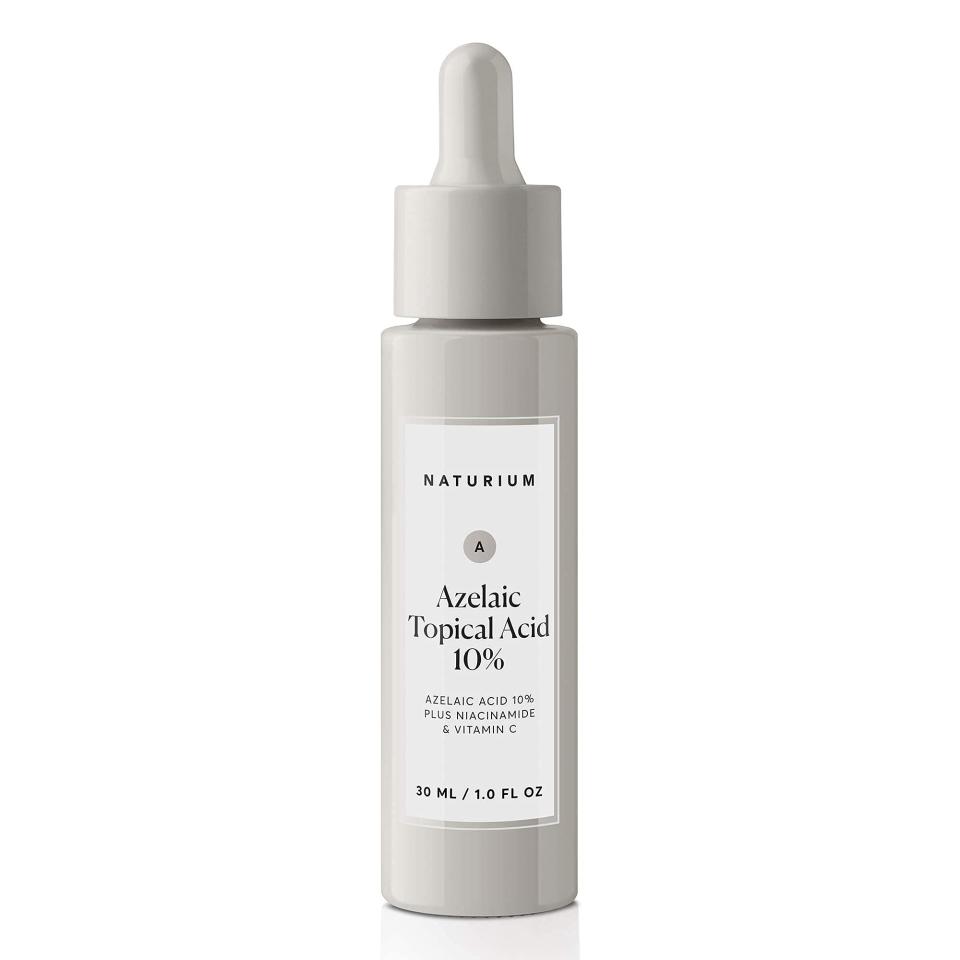
Azelaic Topical Acid 10%
$19.99
amazon.com
Retinol + Niacinamide Body Lotion
As a reminder, retinoids speed up your cell turnover and help your skin shed faster, making it harder for keratin plugs to form in the first place, says Dr. Gohara. Is retinol the most effective treatment for keratosis pilaris? No—AHAs are (like lactic acid). But! This high-strength retinol cream definitely helped soften my bumps when I used it in place of my acid-based lotion twice a week.
Just note that this stuff is strong and will also make your skin more prone to sunburns, due to its added retinol. So slather up with a sunscreen of SPF 30+ every single day as long as this cream is in your routine.
Key ingredients: Retinol (churns out smoother, fresher skin); shea butter (moisturizes); aloe vera (hydrates and soothes)
How often to use: One night a week, slowly building up to every other night (and don't use on the same night as any other active product, including scrubs or acids)
THE REVIEWS: "I really like the way this makes my skin feel. I have KP and very dry skin," writes one reviewer. "Although it does not get rid of the bumps completely, or the marks, it does make my skin feel a little smoother. I will buy this product again."
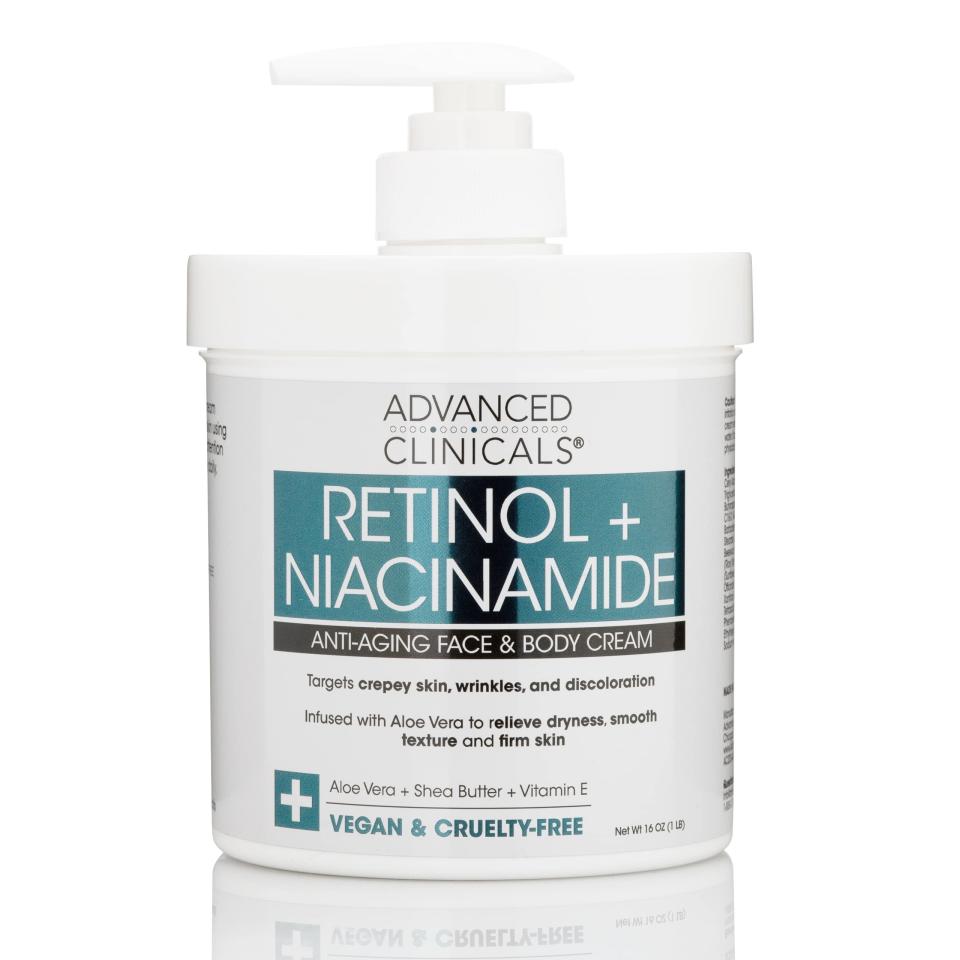
Retinol + Niacinamide Body Lotion
$17.99
amazon.com
Tolerance Control Soothing Skin Recovery Balm
When you have KPRF (keratosis pilaris rubra faciei, i.e., KP on your face), it can feel like everything that touches your sensitive skin somehow makes your KP angrier. Which is why I have a scary-intense obsession with this gentle face cream. It's incredibly moisturizing without any fragrance, harsh ingredients, common allergens, or known irritants, which is exactly what your face needs to handle the acid-based products you're throwing at it.
Just note that it is on the richer side, so on days where I'll be outside in the summer heat, I'll save this one for nighttime and instead use my other favorite, the lightweight Paula's Choice Rescue & Repair Moisturizer.
Key ingredients: Squalane, shea butter (moisturizers); arginine (antioxidant)
How often to use: Every day, twice a day
THE REVIEWS: "Great for hypersensitive skin. I have rosacea and this is one of my standby products," one review reads. "No irritation whatsoever and I am VERY sensitive."

Tolerance Control Soothing Skin Recovery Balm
$36.00
amazon.com
10% Sulfur 3% Salicylic Acid Bar Soap
Reminder: Your keratosis pilaris is made of built-up keratin (i.e., the same stuff in your fingernails). And sulfur—the main ingredient in this bar soap—is a "keratolytic" agent, meaning it works to dissolve the bonds in your keratin plugs, helping them to shed faster. We <3 keratolytics, which is why I also love this soap: It's filled with 10 percent sulfur and 3 percent salicylic acid (another keratolytic agent with redness-reducing properties), making it a KP-kicking powerhouse.
Just note that this soap (and sulfur in general) is strong and can be pretty drying. So once or twice a week, gently rub it over your wet skin (body KP only!), wait five seconds, then rinse off.
Key ingredients: Sulfur and salicylic acid (help dissolve bumps)
How often to use: Once or twice a week (and don't use on the same day as your other scrubs or retinoids)
THE REVIEWS: "Cleared my KP in two weeks," reads one review (though, remember, nothing can truly get rid of KP fully!). "If you have skin issues this soap will definitely help KP, acne, melasma, in grown hairs, are all related skin issues."
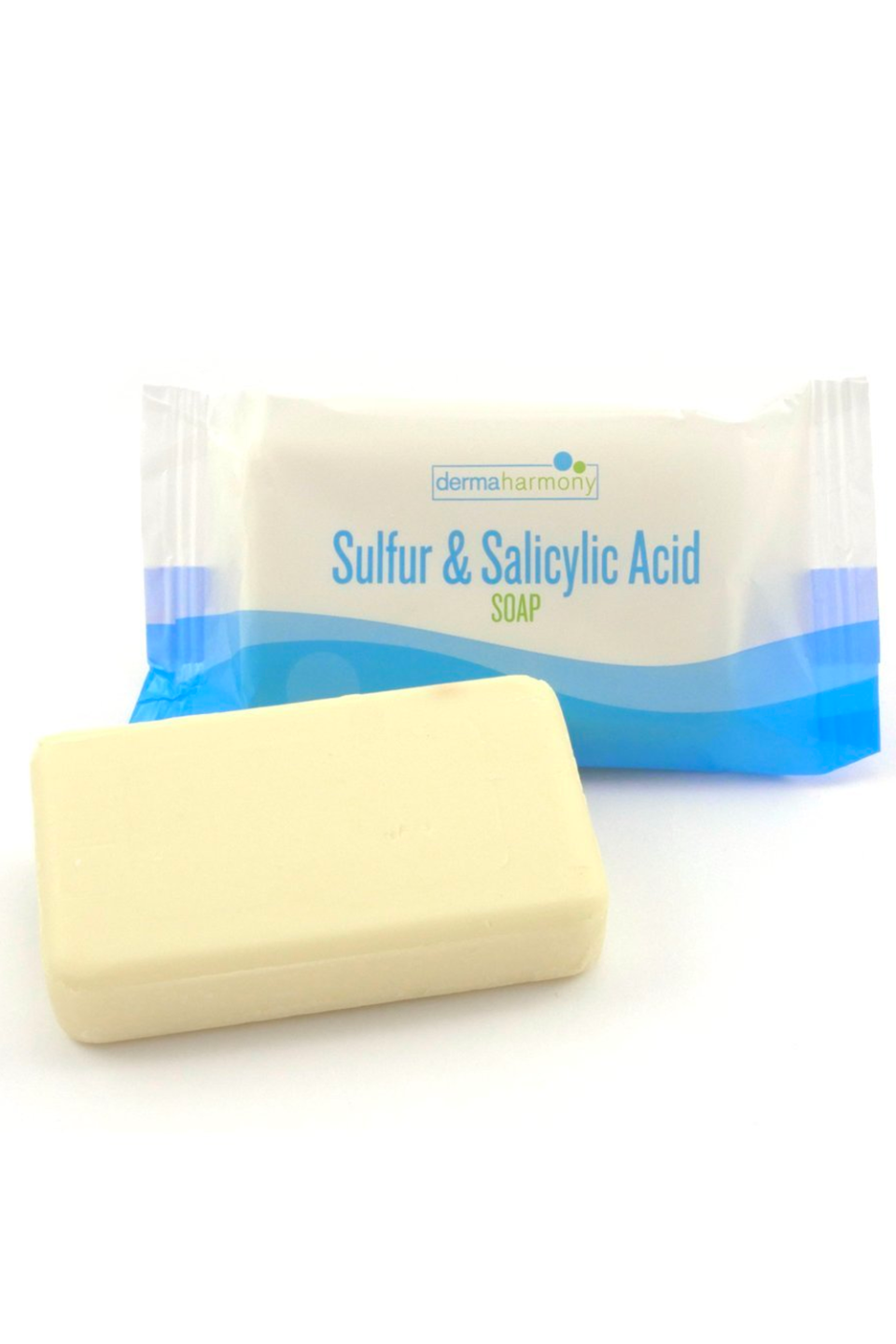
10% Sulfur 3% Salicylic Acid Bar Soap
$8.39
amazon.com
Lactic Acid 5% + HA
The only thing more frustrating than KP on your body? KP on your face. It’s rare, especially for adults, and yet here I am, living my best bumpy-cheeked life. I’ve spent a lifetime (literally) trying to destroy my facial KP, and here’s what I’ve learned: Use only the gentlest of acids, never scrub, and keep your skin as moisturized as possible.
This 5 percent lactic-acid-based serum is the gentlest AHA I’ve found, and its hyaluronic-acid base helps keep KP hydrated. I dab it on clean, dry skin every other night, wait 60 seconds, then layer on a rich, gentle moisturizer.
Key ingredients: Lactic acid (gently exfoliates), hyaluronic acid (draws water into skin)
How often to use: Every three days or every other day (and don't use on the same night as retinoids)
THE REVIEWS: "It is one of the best skincare products that I own," according to one tester's review. "This is a great product if you are just starting to use AHA/BHA and have sensitive skin. It did not irritate my skin at all."
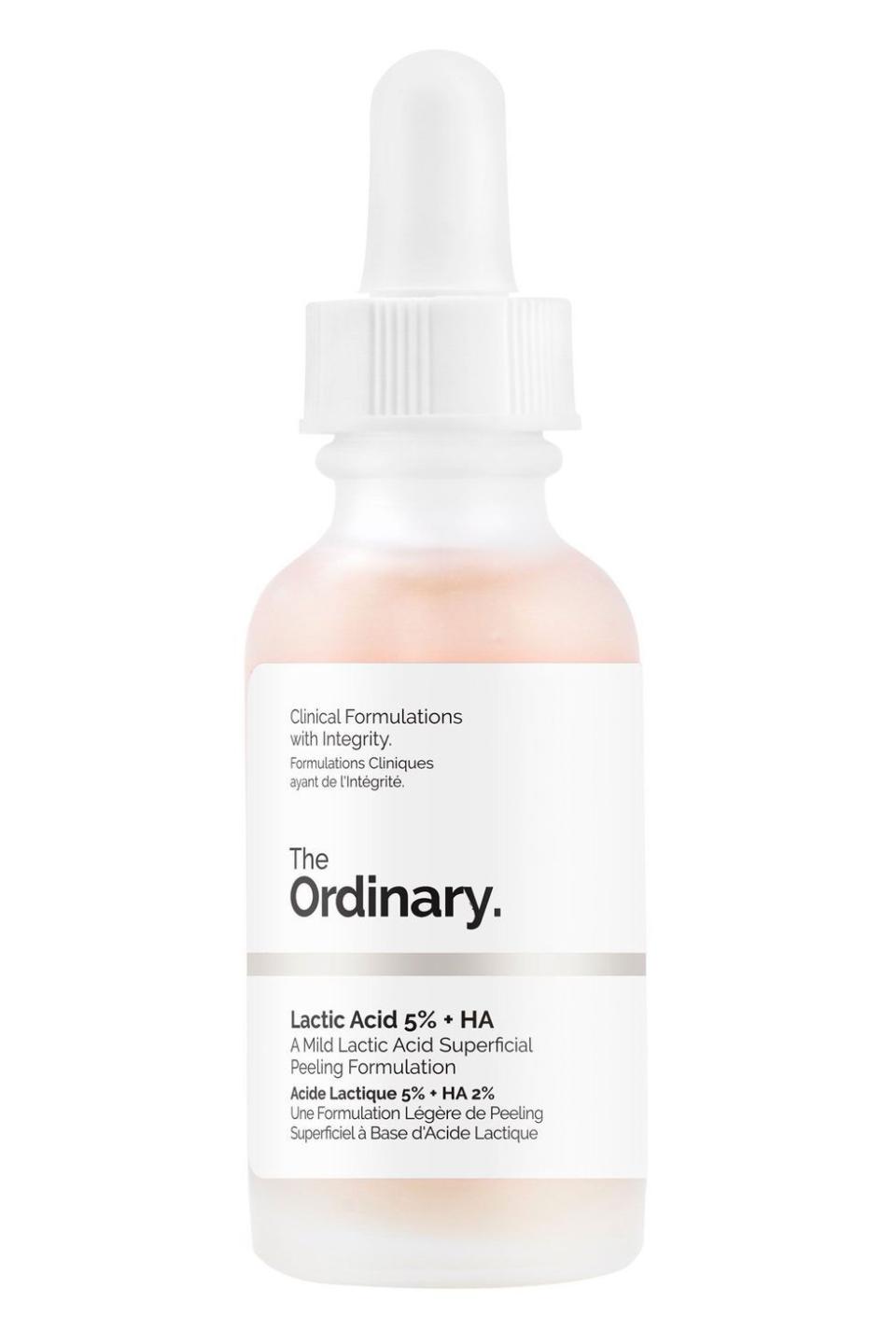
Lactic Acid 5% + HA
$7.80
sephora.com
Courtesy ImageDaily Lotion
You can’t talk about keratosis pilaris without mentioning this O.G. hall-of-fame staple. Amlactin is pretty much the only answer I’ve ever gotten to “how to get rid of keratosis pilaris” and I've had a bottle of it in my bathroom since middle school (I'm serious). The lotion is filled with 12 percent lactic acid that helps dissolve your keratin plugs while also moisturizing your skin.
It really, truly works, but only if you use it every day (on your body only!) for...the rest of your life. The only downside? Its high percentage of lactic acid makes it kinda sticky, so during humid months, I only slather this one on at night.
Key ingredients: lactic acid (to break down bumps); mineral oil (to moisturize and lock in hydration)
How often to use: Once or twice a day (but don't use on the same day as retinol)
THE REVIEWS: "I’m in my late twenties and I got this product to help with the keratosis pilaris I have on my arms and legs. It took about a week using of the product as directed and applying twice a day when I stared seeing fantastic results," one one tester writes. "The bumps went away, my skin has ever felt this smooth."
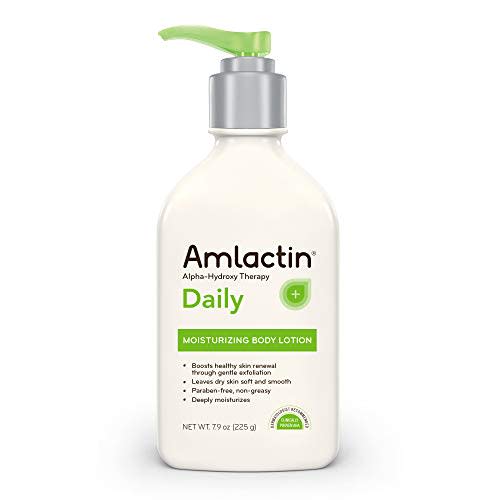
Daily Lotion
$13.97
amazon.com
Intense Moisturizer
I've been using the Elta MD moisturizer on my facial KP for six straight years now (ahem, that's more than 2,000 freakin' days), and it was a huge game-changer for my bumps. It’s not really a moisturizer—it’s an occlusive, i.e., something that traps hydration into your skin and makes the products underneath it (like your regular moisture) way more effective. It doesn't sound exciting, especially since it can't burn or scrub your skin off, but moisture is the true key to soothing keratosis pilaris.
After slathering on a thick layer of my regular face cream, I smooth a dab of this occlusive over my KP while my skin is still "damp." It’s incredibly shiny and almost greasy-looking (think: slugging-level shiny), so I only use it at night, but trust me—this stuff helps.
Key ingredients: Petrolatum (retains moisture)
How often to use: Every night (or day, if you can handle the shine) at the end of your skincare routine
THE REVIEWS: "I have extremely sensitive and reactive skin with rosacea that occasionally flares," reads one review. "This is one of the only products I can slather everywhere, including my eyelids and around my eyes. It works best on damp skin to seal in moisture. Yes, it’s greasy, but it absorbs well and I also like a dewy look."
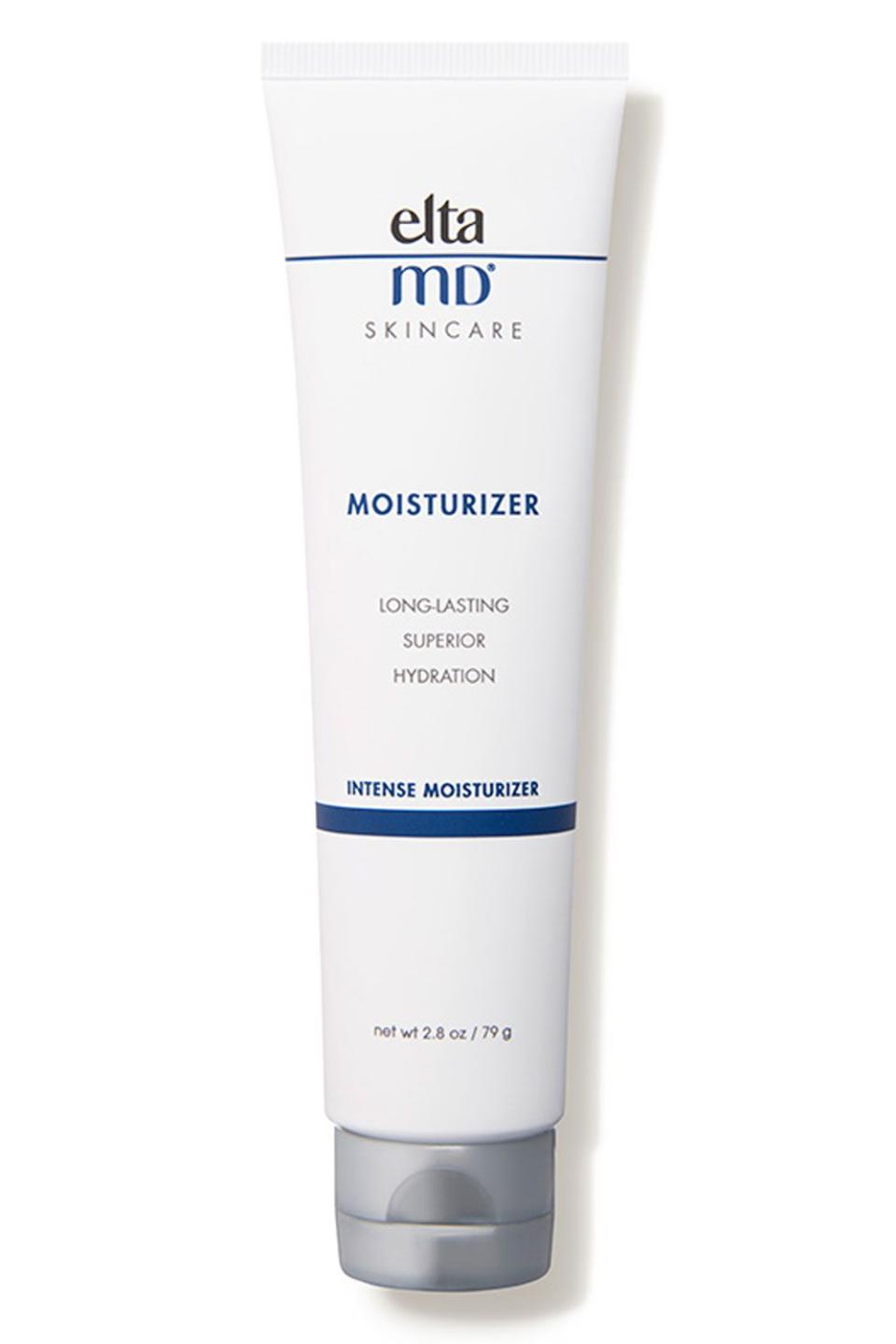
Intense Moisturizer
$16.00
amazon.com
Courtesy ImageSkin Revealing Body Lotion 10% AHA
Glycolic and lactic acids are the gold standard for treating KP, and for good reason: Both AHAs (alpha hydroxy acids) break down your keratosis pilaris bumps to leave your skin smoother. The only difference? Glycolic acid—like the 10 percent found in this body lotion—is stronger than lactic acid, so it's more effective, but it also tends to be more irritating on sensitive skin.
Still, I've been using this lotion for a full year now—I usually alternate with Amlactin depending on the weather—and I can tolerate it on my arms and legs every single night, as long as I layer it on top of my body moisturizer (which I prefer to do anyway, since it isn't very moisturizing on its own).
Key ingredients: Glycolic acid (breaks down and smooths KP bumps); shea butter and grapeseed oil (moisturize); green tea extract (soothes)
How often to use: Every day or night (but may be too strong to use on the same day as a scrub)
THE REVIEWS: "Since I was 12 years old, I've had rough, bumpy 'chicken skin' on my chest that was redder than the rest of my skin," one reviewer writes. "I wish I had taken before and after photos, because I kid you not, the first night I used this lotion, 10 years of redness vanished overnight. My chest is now a healthy color and is much less bumpy."
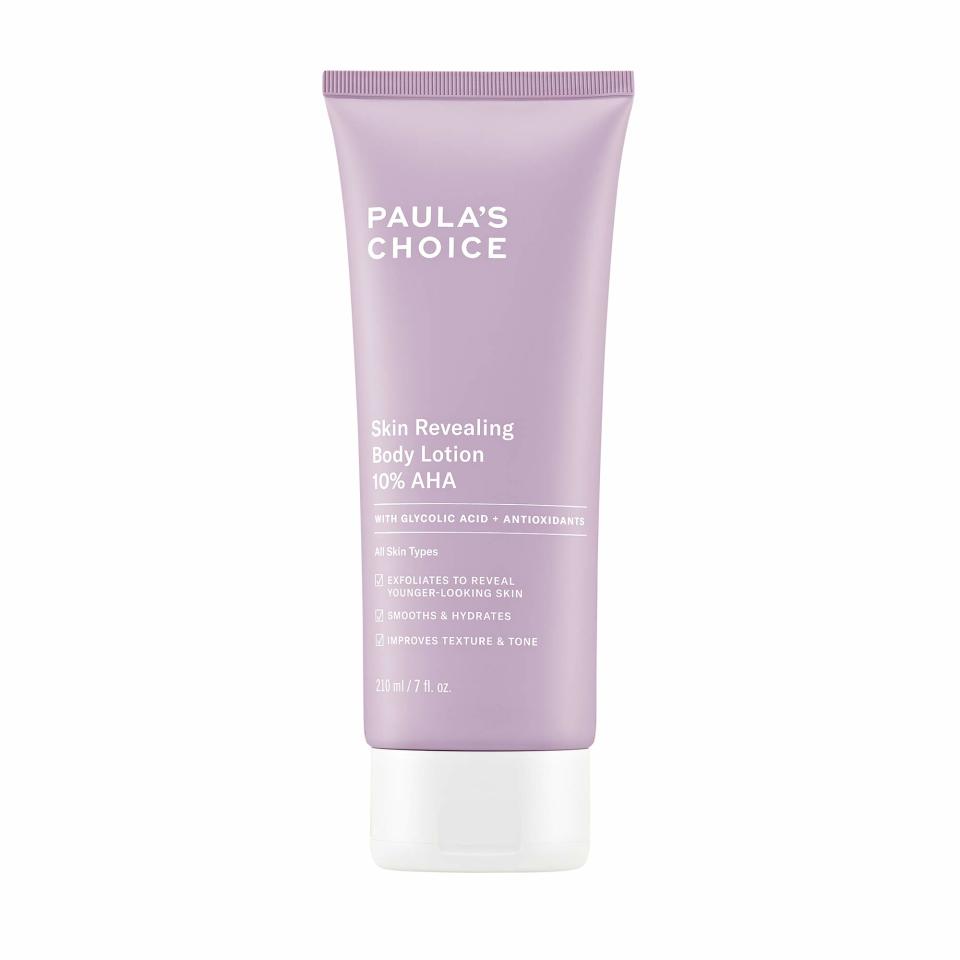
Skin Revealing Body Lotion 10% AHA
$29.00
amazon.com
Skinfix Resurface+ Glycolic and Lactic Acid Renewing Body Scrub
This body scrub from Skinfix has two powerhouse acids: 7 percent glycolic acid and 6 percent lactic acid to help break down KP bumps while buffing away the surface layer of your skin. This one is super-popular among my friend group for smoothing bumps (especially butt bumps), but I found it a bit too strong for my ultra-sensitive and allergic skin.
That being said, it's legitimately effective, so I still recommend it as a gold-star option for anyone with not-too-sensitive skin who hasn't had great success with the other scrubs on this list (and remember: I truly do not recommend anything that I don't believe in for KP).
Key ingredients: Glycolic acid, lactic acid (AHA exfoliators); willow bark extract (BHA exfoliator); grapeseed oil, coconut oil (moisturizers)
How often to use: Once or twice a week (and not on the same day as other retinol or acid-based products)
THE REVIEWS: "This is the best!" one tester writes. "It leaves my skin so smooth and actually gets rid of bumpy skin after 1-2 uses."
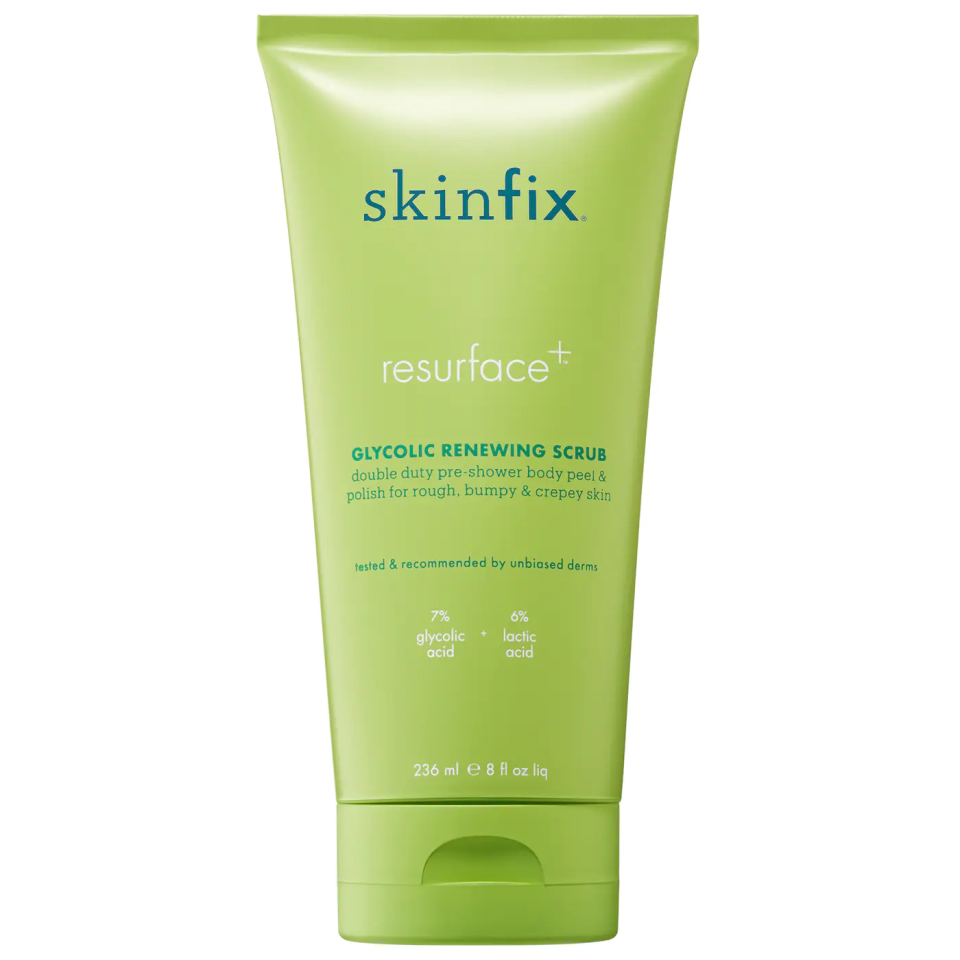
Skinfix Resurface+ Glycolic and Lactic Acid Renewing Body Scrub
$32.00
sephora.com
Courtesy ImageBotox for Keratosis Pilaris
Okay, this is actually a treatment I’ve been most excited about for my facial KP. No, I’m not talking about regular Botox, but “Skin Botox,” a highly popular South Korean treatment for getting glass skin. Basically, instead of getting Botox (or any neurotoxin, like Xeomin, Dysport, or Daxxify) injected into your muscles to prevent movement, “Skin Botox involves injecting small amounts of neurotoxin into the outer layers of your skin to target pores, blood vessels, and oil glands,” says dermatologist Karan Lal, MD.
Find a Botox provider in your zip code
The result? Smoother, calmer, more even-looking skin—which is an absolute dream if you have splotchy, bumpy, keratosis pilaris on your face (or anywhere!). Just note: “Because your skin is constantly shedding and it’s a huge organ, it’s probably going to last only six to eight weeks,” says Dr. Lal (and I can attest to that), but if you have the means—see: $300 to $1,000—and your KP is seriously bothering you, it may be worth testing out, especially before an upcoming event.
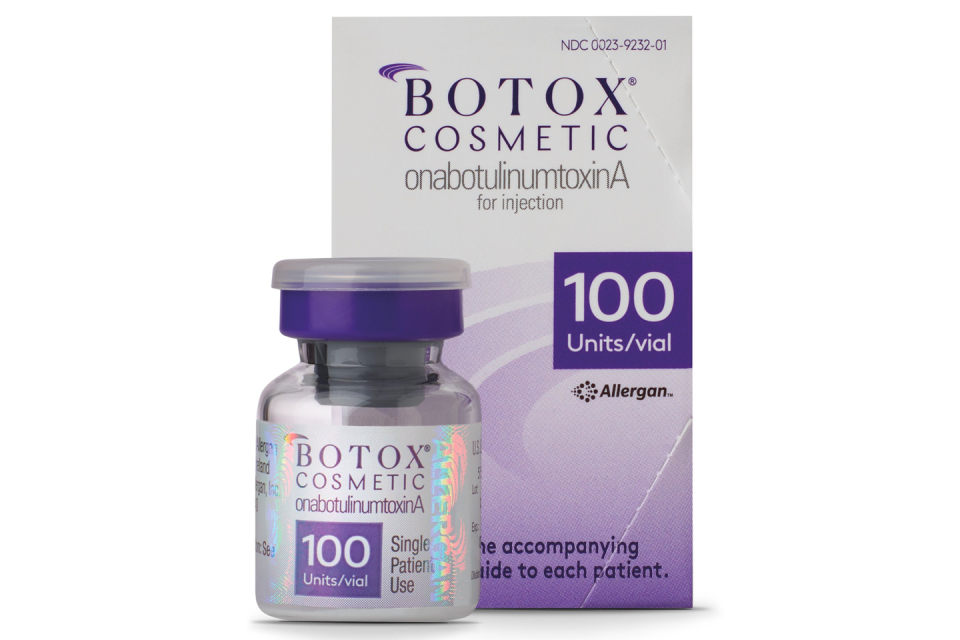
Microneedling for Keratosis Pilaris
Professional microneedling (like SkinPen or Dermapen), involves a dermatologist or physician puncturing your skin with itty-bitty needles to trigger fresh collagen and elastin production, resulting in smoother, brighter, tighter skin. And, when done carefully and correctly—i.e., by a doctor who can pick the correct needle length—it can even help smooth your keratosis pilaris over time.
Find a microneedling provider in your zip code
“Microneedling can help flatten out KP bumps by removing the excess keratin clogging your follicles,” says Dr. Lal. Just remember that skin with keratosis pilaris tends to be extra sensitive, so your KP will likely look extra blotchy and irritated for a few days after treatment. But, after a few sessions spaced four to six weeks apart, you should start to see fewer bumps and smoother skin (or at least know whether or not microneedling is working for you).
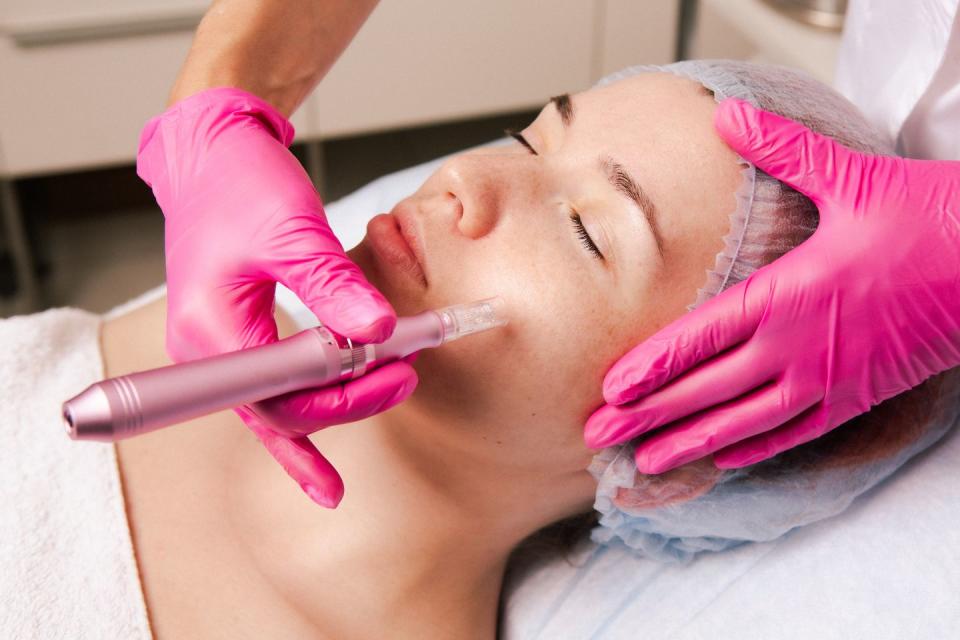
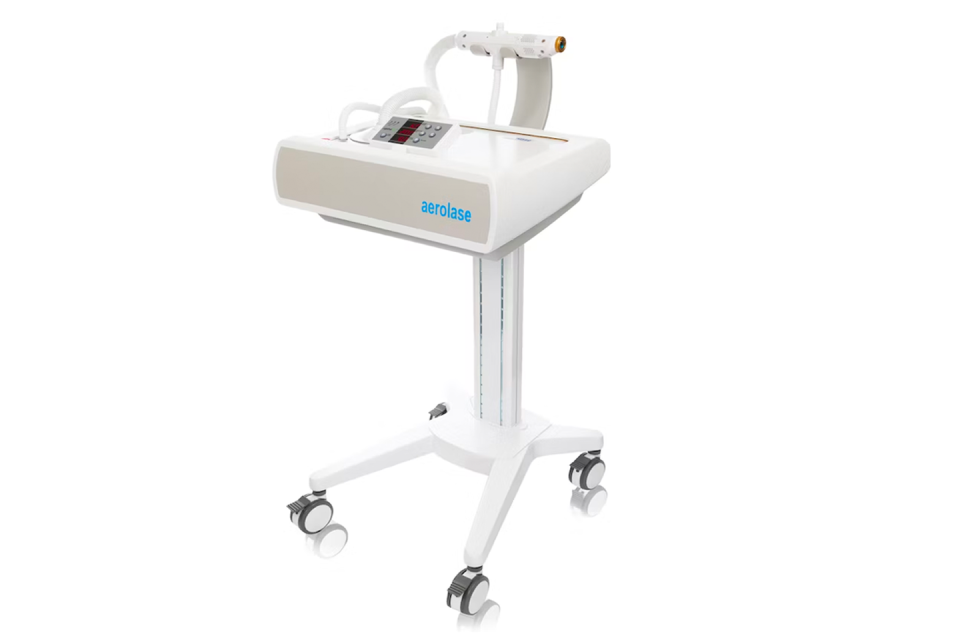
What causes keratosis pilaris?
“Keratosis pilaris is caused by excess keratin building up in your hair follicles, leading to little, hard, red or brown bumps on your skin,” says Dr. Gohara. Annoyingly, no one knows exactly why KP happens in the first place, though. "There are theories about keratosis pilaris being a disorder of the hair follicle, or related to the sebaceous glands, or hormonally driven," says Dr. Thomas. "But we still don't know enough, so research now needs to be at the cellular level to figure out the exact gene that causes KP," she says.

How do I get rid of keratosis pilaris?
I know this isn't what you want to hear (and neither do I), but because keratosis pilaris is part of your DNA, you can't cure it or permanently get rid of it. I know. That's not to say you can't manage it, though—the most effective at-home KP treatments are a combo of chemical exfoliants to dissolve the bumps and rich moisturizers to soften skin—but these treatments are only effective as long as you use them. “As soon as you stop, your bumps will come right back,” says Dr. Thomas.
Hey, that's not to say that by the time you're older, there won't be a brilliant, breakthrough solution. But for now? Sadly, research costs money, and money isn't exactly being funneled into harmless (yet annoying) skin conditions like keratosis pilaris. So, our hopes of a permanent KP cure being discovered any time soon are...slim.

Can keratosis pilaris be treated with lasers?
Again, nothing can truly get rid of your KP, but in-office laser treatments can significantly reduce the redness and/or the bumpy texture on your body or face. “I haven’t found any topical treatment to be all that effective for the redness, so if that’s the main concern for a patient, I’ll recommend PDL—Pulsed Dye Laser—treatments, which target and constrict red vessels in the skin,” says Dr. Thomas. Patients usually need 3-6 treatments spaced a month apart, and treatments can cost $400+ per session.
“If a patient’s main concern is the roughness, then I usually try laser hair removal,” says Dr. Thomas. It’s theorized that trapped hair coiled in the follicle can contribute to KP bumps on the body (not so much on the face, womp), so “if you destroy the hair completely, that can’t happen anymore,” she says. The pricing and number of sessions you need varies depending on where you’re getting it (both location-wise and body-wise), but you can expect at least $300+ per session and 4-6 treatments spaced six weeks apart.

How long does it take for keratosis pilaris to go away?
Keratosis pilaris often goes away on its own when teens go through puberty or as adults age into their 20s and 30s. Of course, you're looking at someone who failed both of those metrics, so it's not a guarantee. Luckily, with the right products, you can likely reduce the appearance/feel of your keratosis pilaris within a month, as long as you're hella consistent with a daily regimen (really).
Also, remember that your "chicken skin" will ebb and flow: It can get rougher in the winter, smoother in the summer, and inflamed with stress and hormones, which is why you need to be consistent with a routine.

Meet the experts:
Mona Gohara, MD, is a board-certified dermatologist in Hamden, CT. Dr. Gohara is an associate clinical professor at Yale School of Medicine and president of the Women’s Dermatologic Society. Her areas of expertise include medical and surgical dermatology and skin of color.
Mary Thomas, MD, is a dermatologist at the University of Toronto in Ontario, Canada, who has authored multiple studies on keratosis pilaris. Dr. Thomas is the head of the membership committee of the Skin of Color Society with a focus on bringing diversity and inclusion into the field of skincare.

Why trust Cosmopolitan?
Chloe Metzger is the deputy beauty director at Cosmopolitan with nearly 10 years of experience researching, writing, and editing skincare stories that range from cystic acne treatments to skincare routines. She’s an authority in all skincare categories, but is an expert when it comes to keratosis pilaris and sensitive skin, thanks to her own lifetime of dealing with rosacea breakouts and her own keratosis pilaris on her face (hi, keratosis rubra faciei) and body. She regularly tests and analyzes keratosis pilaris creams, scrubs, and serums on her own sensitive skin for efficacy, while working with the industry’s top dermatologists and cosmetic chemists to assess new formulas and brands.

You Might Also Like

